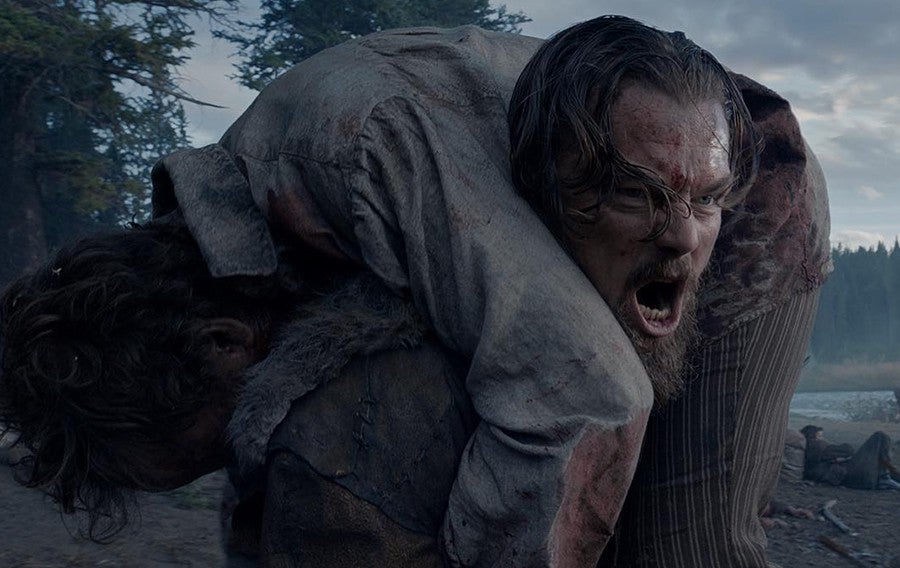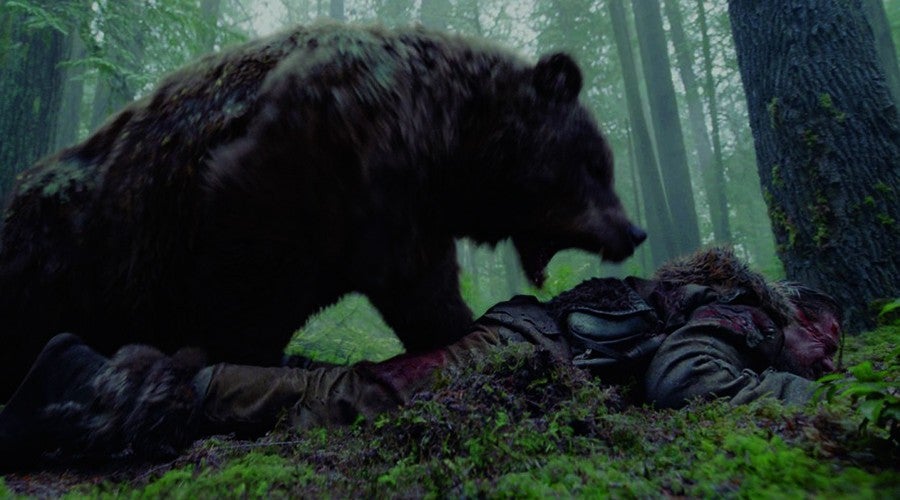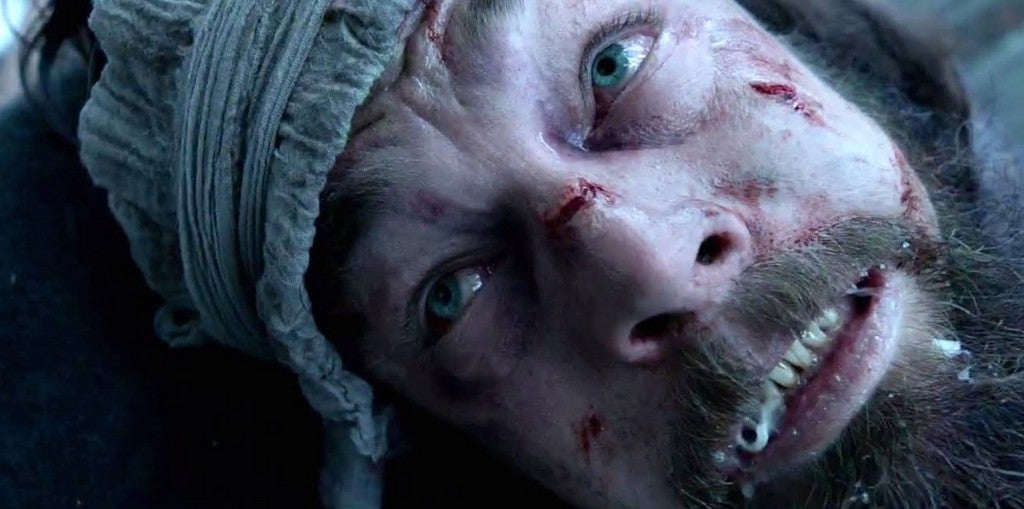Critics were mixed on The Revenant, the front-runner to win the Best Picture Oscar on Sunday. Some (like myself) thought it was a very good film, transporting viewers to the brutal, unforgiving American frontier in the 1830s for a story of a fur trapper (Leonardo DiCaprio) left for dead who must cross brutal terrain to get revenge. (Others loathed it.) But weirdly this awards season, the film’s merits are hardly being discussed — except in one crucial, peculiar way. Everybody involved with The Revenant just wants to talk about how hard the movie was to make. If you want to impress Oscar voters, apparently this is the most important way to let them know you’ve done good work.
The campaigning got started over the summer when Revenant director Alejandro G. Iñárritu (also an Oscar-winner for Birdman, which was its own technical and logistical feat) gave an interview to The Hollywood Reporter to squash rumors that the Revenant shoot had been a disaster that had gone over budget and had put cast and crew through, what one unidentified crew member called, “a living hell.” Part of the difficulties came from uncooperative weather in Canada, where the film was supposed to be shot in its entirety, which forced them to do some shooting in Argentina. Another obstacle was Iñárritu’s insistence on avoiding computer-generated effects as much as possible, which would have made things easier on the physically demanding shoot, sure, but would’ve also robbed his stark drama of its realism.
“If we ended up in greenscreen with coffee and everybody having a good time, everybody will be happy, but most likely the film would be a piece of shit,” Iñárritu said in July of last year. “When you see the film, you will see the scale of it,” he vowed. “And you will say, ‘Wow.’”

That set the tone for much of The Revenant’s subsequent awards campaign, which successfully garnered 12 Oscar nominations — the most for any movie this year. Beyond Best Picture, it will also almost certainly earn a Best Actor prize for DiCaprio, who has discussed in detail how arduous the shoot was, drawing comparisons to the harrowing ordeal his character must endure. “I can name 30 or 40 sequences that were some of the most difficult things I’ve ever had to do,” he said. “Whether it’s going in and out of frozen rivers, or sleeping in animal carcasses, or what I ate on set. [I was] enduring freezing cold and possible hypothermia constantly.”
Thanks to all that carcass talk, this steady “Boy, that movie sure was hard to make” drumbeat for The Revenant has sparked a backlash from those who think the filmmakers are peddling their misery as a badge of artistic authenticity. NPR film reviewer Scott Tobias sarcastically tweeted, “So cold in Chicago right now that Alejandro G. Iñárritu just won an Oscar for directing me walking my dog.” Even those far removed from the film industry are sick of this narrative around The Revenant. Former basketball star Charles Barkley commented Thursday during TNT’s Inside the NBA, “Just ‘cuz a dude live in the cold for a couple months, eat a fish, eat a buffalo liver, kill a horse and sleep in it, that don’t make you the best movie.”
But the problem isn’t so much how annoying it is to watch Iñárritu and DiCaprio go on and on about the labor that went into The Revenant — it’s that such talk actually works. When you look at the history of Oscar winners, a sizable percentage of them — regardless of whether the movie or performance was critically regarded as good — come from films with a pronounced degree of difficulty. The Academy has often mistaken effort for achievement and makes it clear through the number of hardship awards it hands out.
No wonder, then, that we hear endless talk about how much weight an actor lost (or gained) to play a part: physical transformation is a truly tangible effort. And because such roles get Academy Awards — think Robert De Niro beefing up in Raging Bull or Matthew McConaughey wasting away in Dallas Buyers Club — it perpetuates a belief in younger thespians that such physical sacrifice is required to be recognized as a superb actor. If DiCaprio ends up winning Best Actor for The Revenant, it will only encourage others to seek roles that require bear wrestling and bison-eating.
Even more cynically, this tendency pops up when Oscar voters reward actors who play characters with disabilities or illnesses. Whether it’s Dustin Hoffman portraying a man with autism in Rain Man or Eddie Redmayne chronicling Stephen Hawking’s debilitating struggles with ALS in The Theory of Everything, it’s not enough to bring a nuanced character to life — you have to give off the sense that the job was really, really physically arduous. (And critics are just as susceptible to being overly impressed: When we praise such performances as being “brave” or “effortless,” what we’re really saying is, “Wow, that sure looked hard, but he did such a good job of making it seem like it wasn’t!”)
That’s not to say that Hoffman or Redmayne gave bad performances — just that, all things being equal, Oscar voters will often make a point to honor those kinds of roles. And, conversely, they’ll easily overlook a performer such as Birdman’s Michael Keaton, who lost to Redmayne, because it doesn’t seem as inherently “difficult.”

This mentality doesn’t just play out when evaluating acting, but also with the film itself. Oscar voters are swayed by many factors — sentimental storytelling, an underdog tale, movies that feel like valentines to the film business — but let’s not forget the final important criterion: “That film must have been hell to make.” Take The Lord of the Rings: The Return of the King or Titanic, two movies in which the story behind their making is as epic as the films themselves. There’s a dangerous side effect to that thinking, though: Sometimes, you end up with Best Picture winners like 1952’s The Greatest Show on Earth, directed by consummate showman Cecil B. DeMille. Here’s how the film was described by The New York Daily News:
When Cecil B. DeMille undertook to make a picture of the circus, he didn’t intend to do it by halves. He spent several years preparing for the film and, when he found that he could do justice to it, he went ahead with the production … [The] great showman of the movies has packed everything into this one picture. It has comedy, drama, thrills, melodrama, tragedy and great heart appeal. It is the only picture of a circus that actually shows the public the circus as a whole, from its Winter quarters at Sarasota, Florida, its mighty preparations for the road in the Spring, its one-night stands, its colorful parades, and all the glamorous atmosphere that clings to the circus.
To bring a level of believability to his movie, DeMille recruited the entire troupe from Ringling Bros. and Barnum & Bailey to serve as extras — rumored to include about 1,400 performers, not to mention animals of all shapes and sizes. But what was once an extraordinary achievement in logistics is now widely considered one of the worst Best Picture winners ever, usually placing near the bottom of most rankings. Watching it now, I highly doubt most are impressed by all the trouble that went into its making — they just wonder how it turned out to be such a terrible film. With the perspective of time, and as certain achievements suddenly seem a lot less stunning once they become commonplace, a movie like The Greatest Show on Earth is a grim reminder that viewers shouldn’t be wowed simply because the process required to bring the picture to the screen was challenging.
There’s no question that filmmaking is difficult. Writing, directing, acting, working on a set — there’s a ton of work that goes into any creative endeavor. The movie industry requires a lot of people to constantly put their reputations on the line, frightened that they’ve made a colossal disaster, crossing their fingers that they’ll ultimately connect with a distributor — let alone an audience that could guarantee their next gig.
Nobody should be surprised, then, that Academy members have a habit of being sympathetic toward hard work: They know it’s not easy to make even a decent film. But the more the Oscars reward what feels like over-the-top strenuous labor, the more they forget why a movie speaks to a viewer. It’s not because it looks hard to make — it’s because it’s easy and enjoyable to watch. Making a great movie is always hard, but what’s truly impressive is creating a perception that it isn’t.

